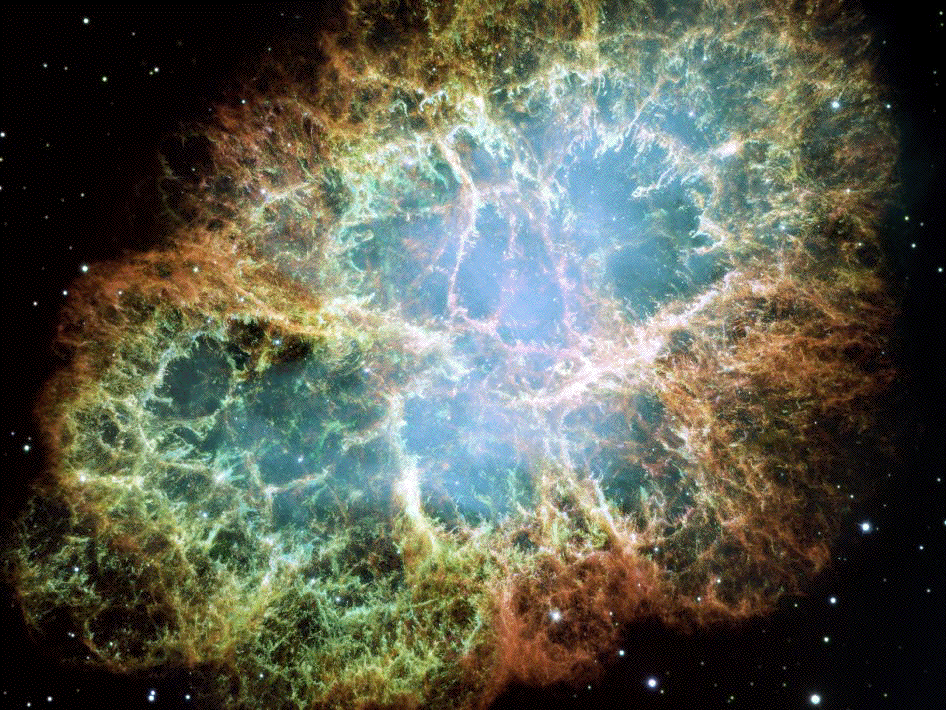
 |
| The Crab nebula (NASA,ESA) |
| A supernova is an immense explosion of a star. For a brief time, many supernovae outshine an entire galaxy, throwing much of the star's mass outwards at speeds up to 10% that of light. The resulting shock wave sweeps up the dust and gas surrounding the star and forms the supernova remnant. |
| If you think that supernova remnants are impossibly far removed from daily life, consider this: elements heavier than iron 56, including the gold atoms of your ring, come from supernovae. |
| About 3200 light years from earth is the Crab nebula, the remnant of a supernova observed in 1054. Almost a thousand years later, the diameter of the Crab nebula is now about 6.5 light years, and is still increasing at about 2200 km/sec. At the center of the nebula is a pulsar, a neutron star rotating 30 times per second. This beautiful, complex nest of filaments made of filaments made of filaments, similar structures over so many levels, looks wonderfully fractal. |
| Careful studies, by Yeunij Kim and others, of Cassiopeia A, another supernova remnant and one of the brightest radio sources in the sky, have found fractal distributions of the sheets and filaments of the Cas A, supporting the commonly held belief that significant turbulence in supernova remnants gives rise to fractal structures. |
Return to extra examples.